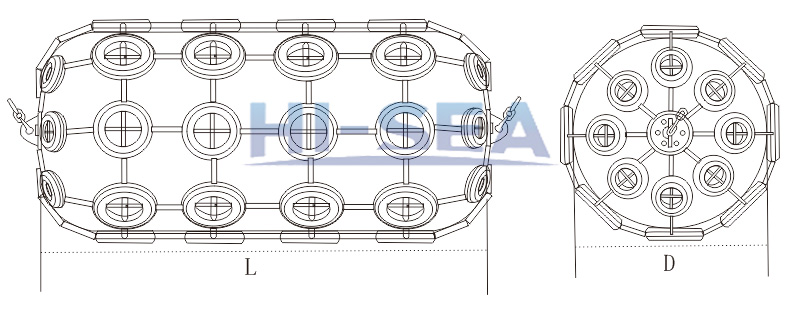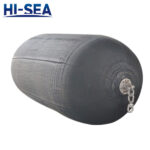
The size 2500×5500 of Yokohama fenders are comparatively larger than other rubber fenders. They are applicable for large docks and ship to ship operations. The Yokohama fenders need to be inflated with air or hydrogen when working, so they are also called Pneumatic fenders.
To carry out heavy duty, the Yokohama fenders need to be manufactured with high-quality rubber materials. Our reinforced and elastomeric rubber material is ideal for Yokohama fenders. They can provide high energy absorption and low reaction force. Their performance will not be reduced too much on inclined berthing.
Usually, Yokohama fenders will be equipped with protection layer, including chain and tire net and so on. The layer can reduce the damage on berthing process to fender body, so that the lifespan of the fenders can be extended.
The best advantage of the Yokohama fenders is to float on the water along with the rise and fall of the sea level. To keep their flexibility, the fenders are connected with chains as installation method.
Yokohama Fenders Drawing and Dimensions:

| Fender size
D×L
(mm)
|
Initial pressure 0.5kg/cm2 |
Initial pressure 0.8kg/cm2 |
weight |
| Guaranteed energy absorption (GEA)
[kNm] |
Reaction force at GEA deflection
[kN] |
Hull pressure at GEA deflection
[kN/m2] |
Guaranteed energy absorption (GEA)
[kNm] |
Reaction force at GEA deflection
[kN] |
Hull pressure at GEA deflection
[kN/m2] |
Fender body
[kg] |
Chain & tire net
[kg] |
Total
[kg] |
| 2500×5500 |
943 |
2019 |
148 |
1317 |
2653 |
195 |
860 |
1050 |
1910 |
Features:
- Suitable for small and large tidal ranges
- Suitable for inclined berthing
- Easy and fast to deploy
- Low hull pressure
- Low reaction force and reasonable reaction force even under excess load conditions








 Sling Type Pneumatic Rubber Fenders(4500×12000)
Sling Type Pneumatic Rubber Fenders(4500×12000)